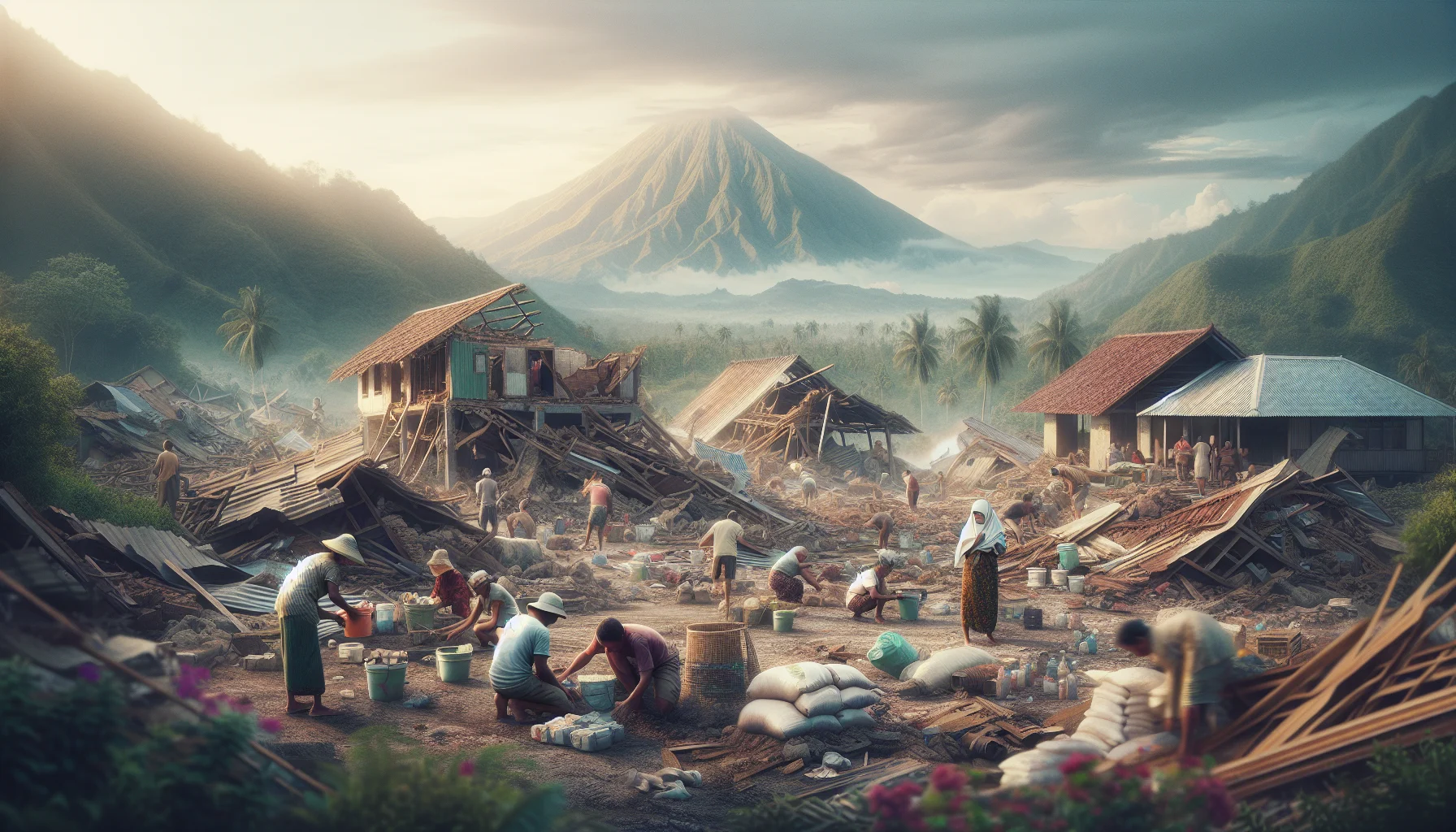
The 2004 Alor Earthquake
by: The Calamity Calendar Team
November 11, 2004
A Quiet Night Shattered
In the still, ungiving darkness of an early November morning, Alor Island lay in its usual slumber under the canopy of an Indonesian sky. The people of this remote place were accustomed to the earth's grumblings, living, as they did, upon the volatile edge of the Pacific Ring of Fire. Yet, no familiarity could prepare them for the shock that would come crashing through the silence at 02:26 local time on November 12, 2004. It was a nightmare born beneath the waves — a 7.5 magnitude earthquake, its epicenter lurking insidiously close to their home shores.
Signs of the Inevitable
The Alor Archipelago is a tectonic jigsaw, pieced together between the Indo-Australian and smaller regional plates like the Banda Sea Plate. This convergence creates a landscape not just of towering beauty but of seismic inevitability. The region’s geological restlessness sidelines complacency; its tremors are a constant call and response between the depths below and those dwelling above.
Life on Alor is a testament to human resilience — the islanders had, through history, learned to live alongside the earth's restive temperament. But the events leading up to this dreadful November day seemed almost ordinary. No ominous signs or prophetic warnings marked what was set to unravel. The people of Alor went about their routines, their thoughts far from the convulsions of the earth.
The Day the Island Shook
The moment the seismic waves exploded upwards from their undersea lair, they carried with them the force of untold tons of shifting rock, setting Alor alight with chaos. Buildings crumbled under the stress, their structures ill-suited to withstand such fury. Homes that had stood for generations, built from local timber and faith, folded to the ground.
The earthquake unleashed a series of aftershocks that rippled across the archipelago, staking fear and uncertainty into the hearts of those still grappling with the initial shock. As day broke on November 11th, it revealed widespread devastation across the island. Despite the light of a new day, hope seemed an alien concept amidst the rubble.
Counting the Losses
The earthquake’s brutal tally: 27 lives lost and more than a hundred injured, though these official figures speak only partially to the full scope of human woe. Remote areas, isolated by landscape and communication breakdowns, held their own untold stories of suffering. The island’s infrastructure, already challenged, found itself gasping under the strain, with homes, schools, and places of worship laid to ruin.
Thanks for subscribing!
Economic despair compounded physical devastation. Subsistence farmers found their crops buried under landslides induced by the quake’s tremors. The seas, usually a bastion of bounty for the island fishers, seemed hesitant to provide in those haunting days following the disruption, their rhythm thrown off-kilter by the earth’s upheaval.
A Harsh Lesson in Preparedness
Response efforts were as swift as circumstances allowed. Indonesian authorities, supported by international aid, moved rapidly to provide relief. Temporary shelters were erected, offering some measure of security from the elements, if not from the emotional aftershocks that continued to reverberate.
This event laid bare the fragile infrastructure and emergency preparedness strategies that had proven inadequate in the face of nature’s wrath. It sparked nationwide introspection into how communities, especially those as isolated as Alor, could be better protected and prepared for the future. And, progressively, policies began to shift.
A Legacy of Resilience
The disaster at Alor was both a tragedy etched into the landscape and a wake-up call resonating far beyond its shores. Over the years, Indonesia has taken significant steps toward bolstering its disaster readiness, drawing lessons not just from Alor but from every tremor that has wrought havoc across its islands. Education programs, simulations, and stronger infrastructure now stand as testaments to a country learning, adapting, and preparing for what may come.
Today, geological surveys provide a deeper understanding of the complex tectonics near Alor. Continuous monitoring aides predictive models — tools necessary for giving precious seconds of warning that might save lives. Yet, Alor, with its scars and stories, remains vigilant under the patient watch of sky and sea, a human society always shadowed by the whims of an ancient, shifting earth.
In the aftermath — amidst rebuilding and recovery — life on Alor slowly stitched itself back together. There are, here and there, remnants of broken lives, and grief that never entirely leaves even as the debris is cleared away. Still, Alor stands, its people enduring with a quiet resolve that speaks to their fortitude. They rebuild not just homes but hope, embodying a resilience stronger than any quake.
Stay in the Loop!
Become a Calamity Insider and get exclusive Calamity Calendar updates delivered straight to your inbox.
Thanks! You're now subscribed.